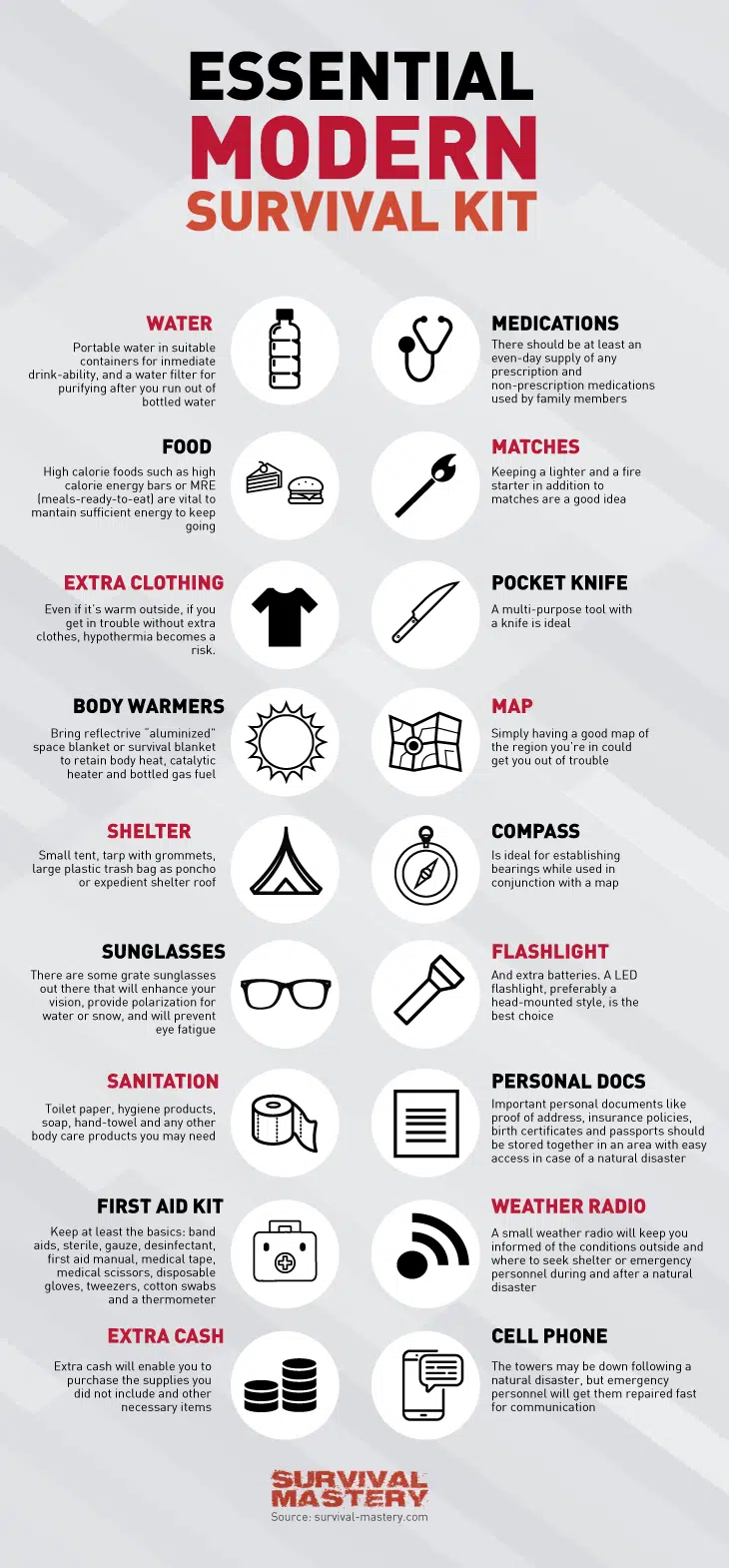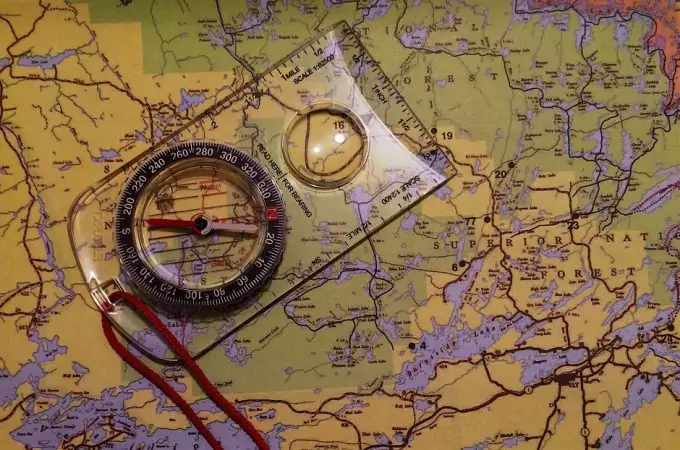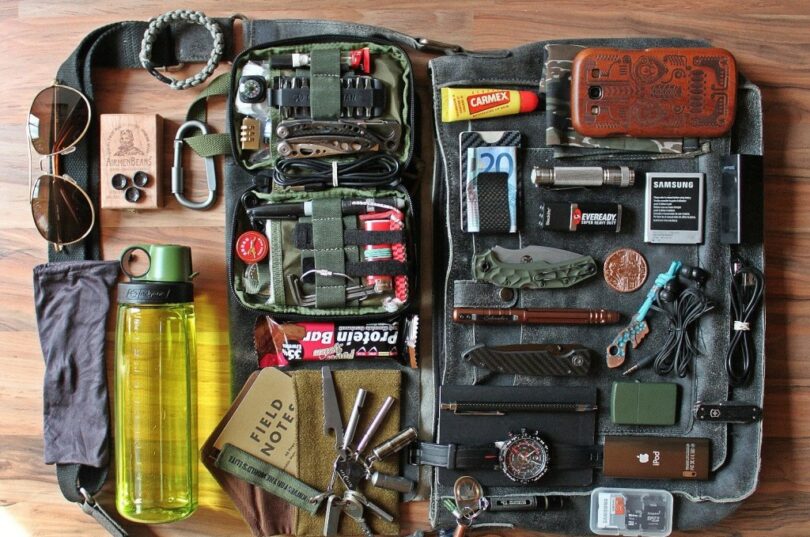Survival is a difficult job which is why only the fittest and the most prepared manage to do it. Even if it doesn’t seem so, we live in a beautiful but dangerous environment, capable to trick us at every step. Over the years we managed to tame it in some areas but there are still wide areas of wild land where Mother Nature is free to toy with us as she likes. This is why today we are going to discuss about survival essentials – items you should have in your bug out bag to make your adventure a little easier.
[the_ad_placement id=”in-text-1-type-a”]Every person who’s been camping at least once in its life has an idea about what to bring. Still, you would be amazed how much of the survival essentials we don’t include in our bags. This actually happens because we never think how we would survive if we got lost or what we would need if something were to go incredibly wrong.
For example, who thinks about taking some extra rope when camping? Or why would you bring an emergency radio and candles? It’s difficult to assess items you would need in an emergency situation when you’re travelling for relaxation; if you’re not a survivalist or if you weren’t preparing for a zombie apocalypse, of course.
You can learn about survival essentials from a survival course. Here you will also learn about hunting with improvised objects and fishing using rope and whatever you have around. Once you know what your go bag should contain, you also need to posses the knowledge of how to use each one of those items in an emergency situation.
Ten essentials list
This is a classic list that was first published in the book Mountaineering: The Freedom of the Hills. The author talks about 10 categories of items each survivalist should carry in its go bag when in an outdoor adventure or in an emergency situation.

We believe you all know by now that the go bag needs to be packed and ready to grab at any time should an emergency arrive. If there’s an earthquake for example, or authorities issue a tornado alert, and order population to evacuate, your first move must be to grab the bug out bag and leave with your family and pets.
Returning to the main topic, let’s see what items should be on your ten essentials list:
- Items for navigation like a map and a compass. Specialists recommend a topographic map so you know what type of terrain is ahead. Also, if you have the possibility, take a GPS.
- Items to make light – flashlight with solar and standard batteries, candle sticks, matches (waterproof), headlamp. During the night you’ll need these items to keep wild animals away and to see around you.
- Items to make a fire – matches, butane tank, lighter, and anything else
- First aid kit with basic items
- Sun protection like sunglasses and sunscreen, a big hat to shield your face and neck skin from the sun. Even if you’re in a mountain area, the sun is strong and direct exposure can lead to skin burns.
- Clothing & footwear – you always need to have a change of clothes and an extra pair of sturdy shoes. Make sure to have shirts with both long and short sleeve, long and short pants, hats, gloves, and anything you might consider necessary.
- Repair kit and tools – when in the wilderness something may break or rip, which is why a sewing kit can be very valuable out there. Also you’ll need a knife, an ax or a machete to chop wood and clear paths.
- Food – everybody has to eat, and if you don’t know what type of food to bring with you when in an outdoor adventure you may have some troubles. Food is very important for your energy levels and your well being so don’t ignore professionals’ advice.
- Water – another item that you can’t live without. If you’re not hydrated enough your entire organism will suffer. This, of course, will reflect on your abilities to climb, think and judge situations. These abilities are of crucial importance in the wild so make sure to bring enough water.
- Shelter – if you’re planning on staying more than a few hours then bring items you can build a shelter with. You’ll need a tarp, some rope, a sleeping pad, and sleeping bags.
This is the ten essentials list and, as you can see, it includes more than 10 items.

Further, we are going to discuss each of these survival essentials and see when and how we could use it. It’s important to know each item very well so you’d know when to use it. Survival tools are versatile and they can be helpful in more than one situation for more than one type of activity. Also, you don’t always need all of them with you. Some are required according to the season and outside temperature. Some are required according to the area you are going to travel to, and so on.
Survival essentials one by one
In the next part of this article we’re going to talk about each item required to keep you alive in an emergency situation. We are going to discuss how to use each item and in what situations.
[the_ad_placement id=”in-text-2-type-a”]Every person must cover four basic needs when in a survival situation:
- food – to keep energy levels and mental ones elevated
- water – to keep you hydrated
- fire – to keep you warm and to cook food
- shelter – to protect yourself from the natural elements
In order to cover these needs you are going to need the following items in your backpack:
- Water bottles and the knowledge to get water from contaminated sources. Make sure to pack as much water as you can carry because, during a disaster, safe water sources are usually contaminated thus making them undrinkable. While you are on the road, travelling to a shelter or a safer place, you won’t have time to look for or to purify water. Once you’re settled, look for a source of water and purify it using boiling or purifying tablets. You should also check out our reviews on purification tablets you can find today on the market.
- Water filters & purifying tablets – it’s very important to have at least one of these items with you. If you don’t have the conditions to boil water, these will allow you to drink from a contaminated source. We also have a great article on how to make a water filter that you shouldn’t miss.
- Water proof containers – extremely useful for when you have to live in the wilderness. You can use them to cook or boil water, allowing you to survive for a longer period of time.
- Fire starters, water proof matches, candle sticks – if you’re not the one to start a fire out of two woods and a few dried leaves, don’t leave home without these. Fire is essential for your survival in so many ways: you need it to cook your food, boil water, keep you warm, make light, protect yourself from wild animals, and so on. The candles will be useful when your flashlight runs out of batteries. A great article and reviews on the best fire starters you can read here.
- Flashlight and back-up batteries – try to invest in a high quality flashlight that will not let you down when you need it the most. We all saw those horror movies when the flashlight gives up exactly when the monster is about to strike. You definitely don’t want that to happen in the woods, when there’s no one else around.
- Propane camp stove – don’t over estimate your survival skills and pack one of these too. You may have managed to make a fire without matches and other fire sources but when the disaster strikes you won’t be thinking about this. A propane stove will allow you to put yourself together before actually having to enjoy the survival at its finest. This sort of stove should last for at least a few weeks if you know how to save it. You can read about the best products on the market and their reviews on our best backpacking stove article.
- Extra clothes and footwear – it helps adding a few extra layers when you want to stay warm and save on fuel. Also, you never know how long you’re going to be in a survival situation so you will need to change your clothes. Don’t forget about socks and underwear; it was proven that it helps you psychologically to be able to change in clean, dry socks and clean underwear. If the clothes you have get ripped and you can’t wear them anymore you can use them to light a fire or to wash and patch other equipment.
- First aid kit & medication – your first aid kit should be well stocked with all sorts of items. You also should add a pain reliever like Ibuprofen (also reduces fever), antiseptic spray (for stings, cuts, burns, and other wounds), rubbing alcohol and hydrogen peroxide for washing out wounds before bandaging, anti-diarrhea medication (you may eat a toxic plant or not boil the water enough and get diarrhea), and any prescribed medication.
- Weather radio & batteries – you need to keep up to date with the news or keep in contact with other survivals. Radio waves are the easiest to use in an emergency situation and a weather radio will start automatically if someone transmits on the emergency frequency. These products are usually compact and durable so you don’t have to worry about damaging them, but if you want to read more about their features, we have a great, in-depth article on the best weather radios.
- Tarp and sleeping bags – if you don’t want to carry a tent make sure to always have a heavy duty tarp, some rope and a sleeping bag with you. These items can help you put together a pretty neat shelter using tree branches, grass, leaves, moss and twigs. The tarp can also be used as isolation from the ground.
- Knife, ax and machete – these items are extremely necessary in a survival situation for both defense and survival. The knife is the most versatile of all but you need to choose it carefully. Specialists recommend using a knife with a fixed blade because it’s more resistant than a folding one. You need it to be sharp, flexible, strong and the handle must offer you a good grip. Some knives have a special depression to use as a socket for when you’re trying to make a fire out of two woods using friction. What you can use a knife for in the wilderness:
-
- cutting smaller branches for shelter
- skinning small animals
- making traps
- making spears out of wood
- you can make yourself a bow
- making kindle to light the fire
- you can use it as socket when trying to make the fire
- chopping smaller woods
- cutting food
- cutting vegetation
- cutting rope and clothes
- use its blade to crush nuts and other hard shells
If you want to know more about knives and their use in the wilderness, take a look at our collection and reviews of survival knives.
-
- The ax should be light and also well sharpened; the main thing you’re going to use it for is chopping woods. The machete is very useful at clearing your path from dried or green vegetation. It’s important to do this because vegetation hides small creatures like snakes, and others. If you don’t have a machete, you can use the knife just as easy.
- Map and compass – important items for your survival essentials. Of course you need to know how to use them in order to orientate yourself in the right direction. Try to take an orientation course or watch online tutorials where it is described how to use a map and a compass. You can also check our step-by-step tutorial on map reading. It’s best to have a topographic map that will show you what type of terrain you are going to encounter but a normal map will also do it.
You should be able to see the main roads and the trail routes you can follow. There are also survival apps you can use for map and compass but it’s always better to actually have them with you. A phone may broke or its battery might die but a physical map and a compass will never let you down. - Personal hygiene items – you may be living in the woods for a while but a bar of soap and some toothpaste shouldn’t miss from your bug out bag. You will feel the need to get your hands clean and the last thing you are going to need are cavities. Take care of your body and you’ll be less exposed to diseases. Dirty hands bring a whole lot of new germs inside your organism and your immune system may not know how to cope with them.
- Toilet paper and paper towels – it’s important to have these items with you to dry your hands and any spills. Paper is biodegradable and you can use it as firestarters once it is dry again. You may not believe it now, but these small items that define our basic comfort are the ones we are going to miss the most.
- Shovel – you’ll need it to dig cat holes and clear paths if there is snow, for example. Also if you will be forced to start your own garden because of a global disaster, a shovel will be of great help.
- Non perishable food – stock up on food with long shelf life like cans, dehydrated food and fruits, dried bread, peanut butter, anything that doesn’t add too much extra weight to your backpack and you think you will be able to eat. There are specially prepared emergency kits on specialized stores where you can get a 7 day food pack. Of course, if you want to stock for a longer period of time, there are bigger packs with more items. Anyways, food is one item that should definitely be on your top survival essentials.
- Emergency whistle and mirror – so you can signal rescue teams or other survivors. An emergency whistle can be heard for a great distance if you put your lungs into it. Remember, three short blows means you are in danger.
- A multi-tool – another important item you can use in many situations. Make sure to take one with a can opener so you don’t have to carry both.
- Extra rope as paracord belts, bracelets and others – if you’re a passionate paracordist you know how these items can be of help when you need that extra rope. Paracord is another versatile item that shouldn’t miss from your survival essentials. It’s extremely useful when you need to repair something, when you need to fish or hunt, or when you simply need an extra piece of strong rope.
- Rain clothing – it’s always best to have a raincoat with you and a rain cover for your backpack. Rain can penetrate your clothes and make you feel cold and miserable. This is not something you need when you’re living from one day to another. Also, if you protect your backpack you’ll keep everything inside dry and ready to use.
Well, these are some survival essentials you should have with you in case of an emergency or a global disaster.
[the_ad_placement id=”in-text-3-type-a”]Still, the most important survival essentials are going to be your skills. Everything you know and you learn about survival is going to be extremely useful when the time comes.
People rely too much on objects and when they can’t use them anymore they start to panic. This is why it’s very important to have you own skills and the capacity to manage every type of situation. You should also be generous and share your knowledge with anyone willing to learn. After all, helping each other in a time of need is what makes us humans.






In a pinch, if you had no time to prepare all 20 of the tings listed, what are the 6 things that you would carry with you?
food,water,clothing,shelter,flashlight
I think there’s a lot of survival gear to carry for one person. I have a better chance to survive when working with a team, cooperation is essential, because if everyone cares about themselves only, few if any will survive a dangerous environment.
Besides that, it is important to keep the survivalist mindset, alone or in a group. I also noticed that lack of food will affect morale, which can slow you down. Common sense is championed all the time, but dangerous situations can render anyone “stupid.” It’s equally important to work on our minds as we work on our tools.
That’s true, Frank. You can best survive a situation in the wild if you work as a group, but the most important consideration is backpacking the appropriate survival essentials.
You can add the following for your list to be complete: compass, tactical knife, body warmers, first aid kit, extra cash, cell phone, sanitation, personal docs, and medication.
Pretty neat list. Apparently, there are ready-made survival essentials packages but reviewers advise on doing the shopping on your own and putting them together yourself, which I agree to because then you’d end up saving money and you get to choose what will suit you best. And if it were me, I’d include a survival handbook, too :D
Thank you for showing interest in our community. Go ahead and put together a reliable survival kit with the help of our article.
When was this article written? I’m trying build a survival kit for a class but I need to give information about the articles I read in order to use it in my kit.